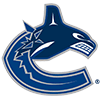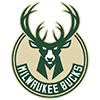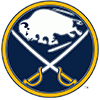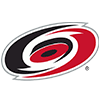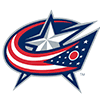Going once. Going twice. Sold!
There's something invigorating about those words for veteran auction players. Buying, as opposed to drafting, players adds another layer of complexity to the puzzle that is putting together our fantasy squads. Today, an eye-opening trend in the early National Fantasy Baseball Championship (NFBC) auctions will be examined.
To set the table, NFBC veteran Andy Saxton administers 15-team Mixed Auctions played out as NFBC Satellite leagues. I get the results and compile an Average Auction Price (AAP) list. To date, there have been 13 auctions, so the sample is decently sized.
Along with determining the average price paid for each player, I compute the ratio of money spent on hitting versus pitching for each auction. Historically, 30 to 35 percent of the totaled budgets are dedicated to pitching. Curiously, all 13 leagues fell between 36 and 38, with an average of 37 percent.
Taking a step back for a moment, the NFBC is known for its aggressive approach to pitching, best exemplified by their average draft position compared to industry drafts, let alone home leagues. There's a plethora of reasons for that, beginning with the fact there's no trading in the NFBC, so the common ploy of bullying hitting while managing pitching isn't as effective since there's no dealing away excess bats for arms. The no-pickup nature of the early NFBC drafts also contributes, but the fact is pitching will probably be drafted with even more urgency come the Main Event, which features bidding on free
Going once. Going twice. Sold!
There's something invigorating about those words for veteran auction players. Buying, as opposed to drafting, players adds another layer of complexity to the puzzle that is putting together our fantasy squads. Today, an eye-opening trend in the early National Fantasy Baseball Championship (NFBC) auctions will be examined.
To set the table, NFBC veteran Andy Saxton administers 15-team Mixed Auctions played out as NFBC Satellite leagues. I get the results and compile an Average Auction Price (AAP) list. To date, there have been 13 auctions, so the sample is decently sized.
Along with determining the average price paid for each player, I compute the ratio of money spent on hitting versus pitching for each auction. Historically, 30 to 35 percent of the totaled budgets are dedicated to pitching. Curiously, all 13 leagues fell between 36 and 38, with an average of 37 percent.
Taking a step back for a moment, the NFBC is known for its aggressive approach to pitching, best exemplified by their average draft position compared to industry drafts, let alone home leagues. There's a plethora of reasons for that, beginning with the fact there's no trading in the NFBC, so the common ploy of bullying hitting while managing pitching isn't as effective since there's no dealing away excess bats for arms. The no-pickup nature of the early NFBC drafts also contributes, but the fact is pitching will probably be drafted with even more urgency come the Main Event, which features bidding on free agents.
In previous seasons, even the NFBC teetered toward a pitching split in the low 30s. In a season with so much pitching uncertainty, it shouldn't be a surprise even more budget is pushed to the hurlers. Simple supply and demand economics dictates a low supply renders high demand, and there's a dearth of trustworthy, quality pitching. Still, 37 percent is fascinating.
On the surface, it may seem like everyone is overpaying for pitching. Here's the thing, though: they're not. The market has shifted more resources to that side of the ledger. That's not overpaying; that's adjusting to the current landscape.
Some of you are probably saying, "If Clayton Kershaw is worth $40, paying $44 because someone is using a 63/37 split is overpaying, he's still worth just $40."
No, he's not.
There are several tenets of valuation theory. Most are based in logic, expressed mathematically. For instance, in a 15-team mixed league with rosters consisting of 14 hitters and 9 pitchers, exactly 210 batters and 135 throwers are assigned positive value. The sum of the values for all 345 players is exactly equal to the number of teams multiplied by the allotted team budget, conventionally $260. In other words, adding up the salaries of the 345 active players should yield 15 times $260 or $3900.
Now the fun part. Because the number of hitting and pitching points are the same, the available budget should be allocated evenly. That is, each team should spend $130 on hitting and the same on pitching. Based on this, a conventionally priced Kershaw worth $40 is properly valued at $66. A $40 hitter drops to $30. As an aside, this is why Kershaw is absolutely deserving of the first overall pick in a draft. Of course, his health concerns offer a salient counter argument, but that's a discussion for another day.
The talking point here is how can spending $44 for someone worth $40 be an overpayment if an integral component of the $40 pricing is empirical? That amount is a by-product of a different split. The NFBC has decided they no longer want to adhere to a 180:80 budget, instead they're comfortable with 164:96. The truth is, both are wrong. It should be 130:130 What's wrong with paying $44 for a commodity expected to return a 50 percent profit?
While this argument is true on paper, the key is still figuring out how to purchase maximum production within the confines of what the market is paying. Anyone planning on spending 80 bucks on pitching in one of these auctions better have adjusted on the fly, shunting some budget away from the other side of the ledger. Refusing to pay the going rate and waiting for that ethereal "value" is a losing strategy.
To demonstrate this, I gathered the latest bid prices from three trusted sources: RotoWire, Baseball HQ and my own at Mastersball. Each set was customized to a 15-team mixed league with a 69:31 split, as that is what I've seen used most over the past few seasons.
Those refusing to budge from RotoWire prices would have purchased Jon Lester, Rich Hill and Kyle Hendricks as their first three hurlers. Anyone stubbornly adhering to the Baseball HQ list would be the proud owners of Zack Greinke, Luke Weaver and Kyle Hendricks. This is manageable, but keep in mind, most of the auctions were pre-humidor, and our friends at Baseball HQ correctly believe in physics and have adjusted Diamondbacks expectations. If I were in one, my staff would feature Greinke, Hendricks and Alex Wood. Again, workable, but hardly ideal. Not to mention, I'd be battling someone from Baseball HQ for Greinke and bidders from both other sites for Hendricks, so who know who would have blinked first.
All told, seven of RotoWire's top-50 starting pitchers were purchased below expected return, while 10 using Baseball HQ and nine from my rankings would have yielded a potential positive return on investment.
Some people draft with sophisticated software, so they could do the following as soon as they realized it was necessary. Others could have just opted to raise their pitching budget subjectively. I went back and recalculated the three bid lists using a 63:37 split. With these parameters, both Kershaw and Max Scherzer are strong investments according to RotoWire. Baseball HQ favors Kershaw, Corey Kluber and Chris Sale. Mastersball gives the thumbs up to Kershaw, Kluber and Sale.
Unless someone wants to double up on an ace, they'd likely buy one and wait for good purchases in lower tiers. This is a viable strategy as RotoWire now avails 16 options in the top 50, while Baseball HQ offers 22 with Mastersball checking in with 19. Considering one likely wants three or four of the top 50 starters in a 15-team league, there's ample inventory to make it happen with the adjusted split.
This argument isn't perfect. Remember, the initial A in AAP is average. In some of the 13 auctions, players went for a few dollars more than the AAP, in others less. You can always try to land on someone selling for less than your list price. However, if it doesn't happen early, all the fantasy anchors will be exhausted, and you'll be beginning your staff behind the eight ball. There are ways to deal with this, like rostering better closers or a stronger back-end of the staff.
For fear of making the focus of this discussion totally on NFBC auctions, it turns out almost all of the starting pitchers sync with the 63:37 split while the closers are more in line with 69:31. This makes sense, since the overall pitching split is 37 percent and even with the adjustment, more of the top 50 starters are still selling for more than the adjusted number, with the closers going under.
As suggested, the purpose of this discussion isn't meant to be an NFBC auction primer, though it certainly helps to prepare for the likelihood of having to open your wallet to buy arms. One point relates to the notion of overpaying at an auction. This isn't a rubber stamp to get Mike Trout or Jose Altuve at all costs. However, it's inappropriate to judge something against a subjective measuring stick. I promise, you're going to read and hear auction analysis, chastising overspending or paying inflated prices. Keep in mind, not only does everyone have different player outlooks, we're all managing our bids against different barriers. Especially in leagues with trading, it isn't as important to leave the auction with a balanced team. The bigger focus should be on remaining nimble and adjusting to the market.
The example used here is starting pitching. In some leagues, it could be a category like speed or even the prices paid for top catchers. In most instances, you're not overpaying, you're making a salient adjustment based on supply and demand economics. The initial split isn't magic; it's an educated guess, subject to change. Don't be afraid to change if necessary, even if all you do is move budget from one side to the other, without formally calculating bid prices with a new split.
Next week, we'll stay in auction mode, looking at end-game dynamics. As a teaser, print out a price list customized to standard 12-team American and National League only formats and follow along with LABR this weekend, comparing the end game results to the calculated prices.









